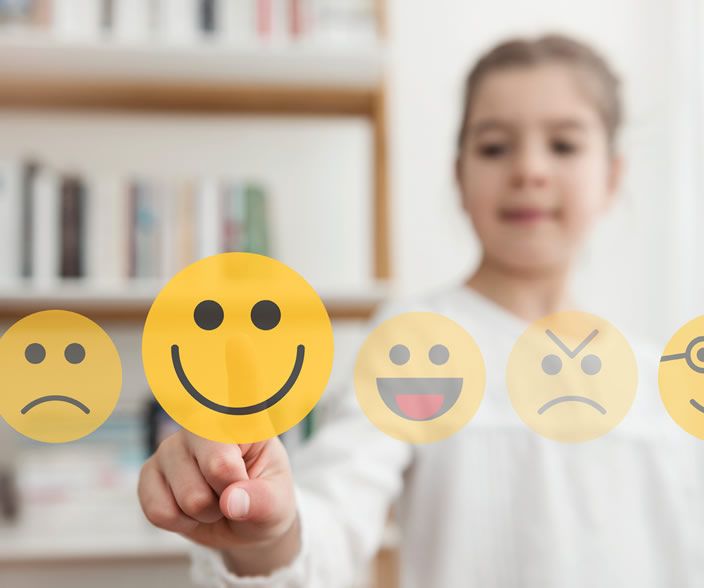Extreme behaviours can be the result of a complex range of backgrounds and influences that impact on a student’s ability to cope, including:
- neglect and abuse
- dysfunctional attachments to significant caregivers
- adverse childhood experiences
- drugs and alcohol
- social media
- social skills and emotional competencies
- learning needs and delayed development
- situational and generational poverty and disadvantage
- nature v nurture – our biology and biography
- motivating reluctant students to value formal education.
All we need to do to reduce the risk of extreme behaviour is to address and ameliorate one or more of the above so that students can cope with school demands. Simple!
For some children, extreme behaviour is their best response to a complex social, emotional or academic setting. Their behaviour can be escape and avoidance related or is about control and power over someone or something. If teachers can look through the lens of ‘what need is being met by this behaviour’ and replace that behaviour with a more appropriate one, then an extreme event may be avoided. By being able to understand the child and what antecedents may trigger individual extreme behaviours we can be more proactive and reduce the likelihood of an extreme event.
How to respond to extreme behaviours
The key is to be calm and assertive. Being calm is usually the first piece of useless advice given when responding to an extreme event like an earthquake, a fire, or a lock down. Being calm is the last thing our brain wants us to do, especially when the event or behaviour is a new experience that our brain perceives as a threat.
Can you remember the first time a child shouted at you or used some colourful language to describe your appearance? You will know of some colleagues who have worked in demanding schools where extreme behaviours are commonplace and they have become habituated or used to these sorts of behaviours. Think of the calmness that emergency services personnel show when in the heat of the moment. It takes some time to understand the teaching ‘role’ and detach enough (keep being warm and approachable!) to know that the behaviour is not about you; it’s not personal.
When we sense a threat, our brain puts us into a freeze, flight or fight response. We need practice to reduce the threat response that floods our body with adrenalin, shutting down the rational prefrontal cortex and putting our amygdala on high alert; the mid-brain is our smoke detector or early warning device to keep us safe. Can you see the similarity when a child is overwhelmed by the classroom demands or expectations? Remaining calm and taking decisive action is the best way to get a child’s rational brain back online or out of freeze, flight or fight mode. Reading this article and developing your own extreme behaviour plan is ‘practice’ that will help you to remain a little calmer each time you think about or experience an extreme behaviour event.
This means that you need to rehearse and practise your extreme-behaviour response so you can keep your rational brain online when a student loses it in your classroom. This also means having a plan. By having a plan, it will be your reference point and you will feel more confident about what you need to do when it hits DEFCON 5 in your classroom (Defence Readiness Condition).
In practical terms it means lowering the volume of our voice, using a calm tone and stepping back out of the child’s personal space.
Stopping any aggressive body language, gestures, movements, expressions that may be seen as a threat and repeating some calming phrases like ‘it will be OK/we will sort this out/you are not in trouble/take some breaths’ etc.
Calmness is contagious. It will help the other children manage what is happening and assertiveness is about consistency and predictability. Both important things for the other children to see and feel; they trust you and can rely on you to sort this out with a minimum of fuss.
The 10-step plan
Assertiveness is showing that you know what to do, you have a plan to sort this out. Below is a 10-step plan that you can incorporate into your teaching.
1. Establish and maintain safety – your safety and their safety
Are you safe? Your wellbeing is a key consideration. Do you have appropriate training to get involved physically and separate and restrain students? Will the measures that you took be deemed reasonable in a court of law and should you have done something else? Are the bystanders and onlookers safe? Is there the potential for them to be injured or become involved? Do the following: call out ‘stop’ repeatedly in your biggest voice. If you know the child’s name use that with ‘stop’. We need to get the thinking brain back online so hearing their name with verbs like ‘stop’ may do the trick. In between calling out ‘stop’ instruct other students to ‘get a teacher/get someone from the office’. Summon the need for help repeatedly. Send lots of students in all directions. In between shouting stop and sending students for help, instruct any senior students to move the younger students away. ‘You lot, move the junior students away/Help me out and take the younger students onto the oval’. Be decisive and assertive.
2. Self-regulate – this is about you
What can you use to manage your emotions and think clearly about what to do and say? Use some mindfulness, take 10 deep breaths, bring your plan to mind.
3. Calm the child
Knowing the child and what will help them to self-regulate can be very helpful, especially if they have a care or safety plan. If not, ask them to go with you to somewhere private and quiet, and encourage them to have a drink or eat something, draw, do something tactile. Whatever helps the child to self-regulate.
4. Help the child understand what happened
When they are ready, ask them to talk or draw or show what happened. Restorative practices, questioning is helpful here. Avoid blame through ‘why’ questions.
5. Work with the child to take responsibility
Encourage story telling by working through the beginning, middle and end stages of what happened and debrief the child about their actions, thoughts and feelings.
6. Speak with the other children
Provide the bystanders and onlookers and friends a voice and some agency by asking reflective, open-ended questions and maybe even run a class meeting or healing circle for extreme behaviours that have impacted on everyone.
7. Write a complete report/debrief with admin
Your school may have a paper or online recording and reporting system that you can use to make an accurate record of who, what, when, how, where.
8. Review the plan
If you have a school-wide critical incident plan or a plan for your classroom, review what went well, what changes are needed, what did we learn.
9. Document, document, document
The incident should be logged on the school system. Spending some time documenting what happened in a journal or teacher diary is often helpful for people to gather their thoughts. Leave the incident in the journal to help you work through any strong and lasting emotions.
10. Debrief with a trusted colleague
Some of us can recover from an extreme incident without a further thought but others can’t stop thinking about what happened. We may be experiencing post-traumatic stress disorder (PTSD). It is recommended that teachers are set up with a buddy and when needing to manage an extreme behaviour or event take the time to have a debrief. There are two examples of a quick debrief below.
• Debrief version 1
What did you do that helped?
What did you do that did not help?
What would you do differently if faced with the same behaviour?
• Debrief version 2
What concerned you during the incident?
What concerns you now about what happened?
What needs to happen about that?
What support can we provide?
Four guiding principles for reporting and responding to an extreme behaviour
- Provide clear, accurate information – to the office or senior member of staff so they know clearly who to get and what to do to help you and your students.
- Describe the actions to be followed – what and who do you need in your classroom/playground immediately and at the end of the day?
- Provide help for all affected – follow the 10 steps above.
- Maintain a normal school/classroom program as close as possible – stick to known routines to provide a level of predictability and consistency for all.
We can sometimes feel powerless in not being able to do anything to stop the extreme behaviour and it is common that after we consider what we did, we criticise ourselves for not taking another course of action. This is normal neurological behaviour as in the cold light of day we can access the rational areas of our brain, which are now back online, that escaped us in the heat of the moment.
Journaling or writing objective notes in a personal diary may be helpful in the recovery process. Remember to sign and date it, for example: Monday 1 April 2020 at 2.45pm
David is moving in and out of the classroom, screaming obscenities and refusing to join the class despite a range of clear directions that I gave including, “David, I need you to stay in the classroom, sit down, and be quiet thanks” and “David, it is not OK to be using those words in our classroom, remember our agreement thanks”. I sent two reliable students with a ‘red card’ to the office to request assistance from the assistant principal. I attempted to distract David and offer a calming activity at our ‘chill corner’. He refused and threw a glue stick at me, breaking my laptop screen.
How to recover from an extreme behaviour?
Once the dust has settled and everyone involved has been supported through the recovery stage, a response needs to be mounted. This should support the child to prevent further extreme behaviour and address their needs through some reasonable adjustments, usually documented in an Individual Education Plan, Behaviour Plan, Care Plan and a Crisis Plan.
Communication and clarity around roles, responsibilities, and expectations is vital and after an extreme behaviour event a fresh plan needs to be considered rather than a fresh start.
In summary
Extreme behaviours can and will have a different impact on all teachers. Remember to:
- have a plan
- document, document, document
- debrief with a colleague
- review the plan.




































































































































